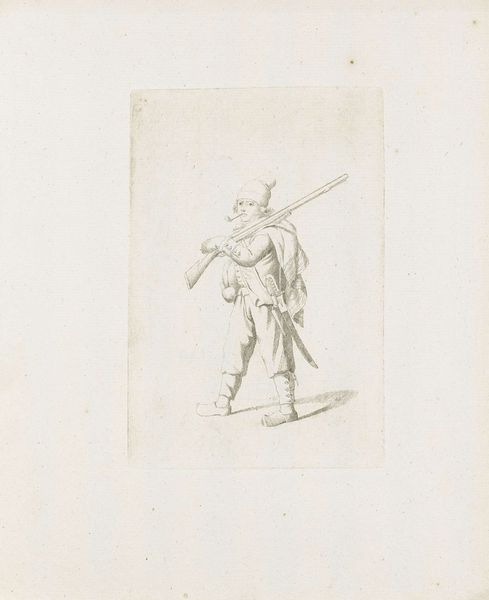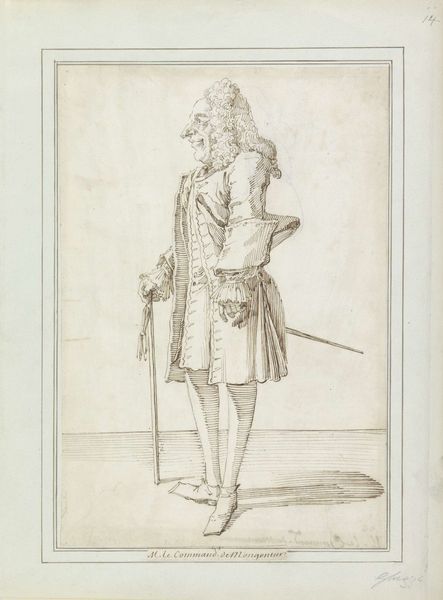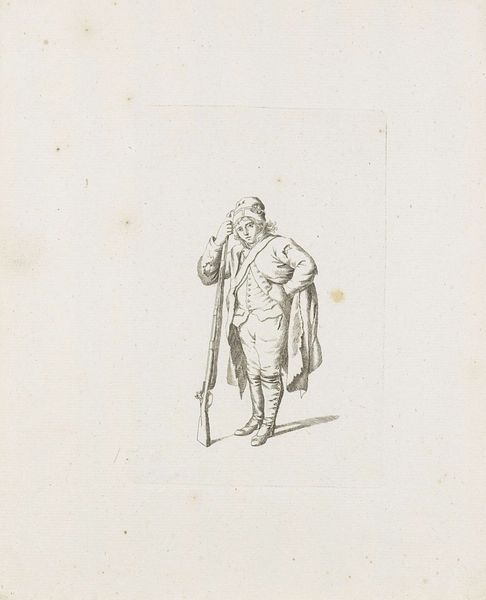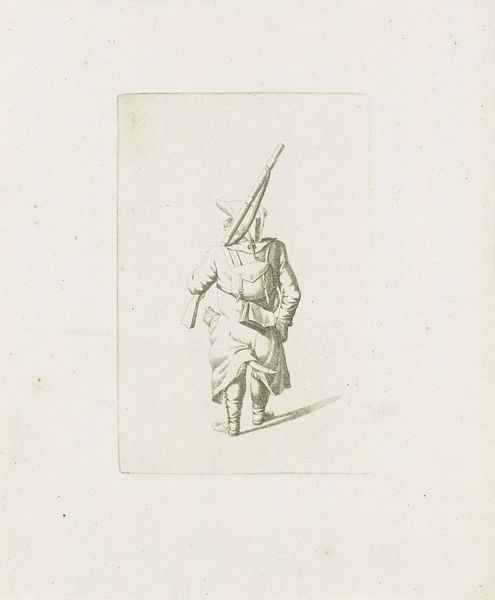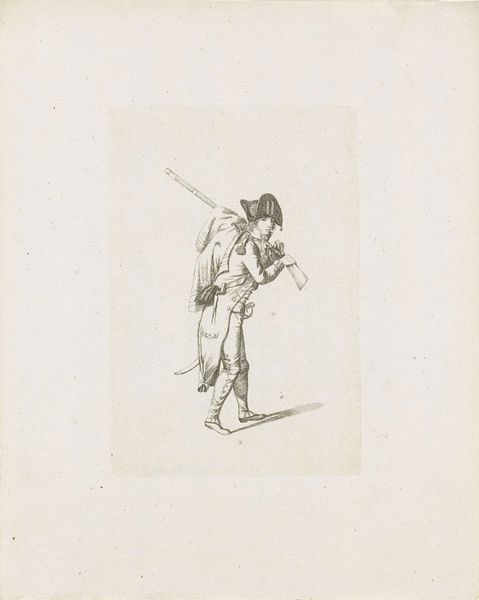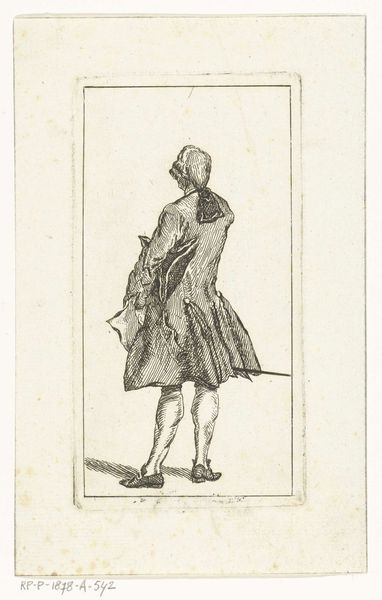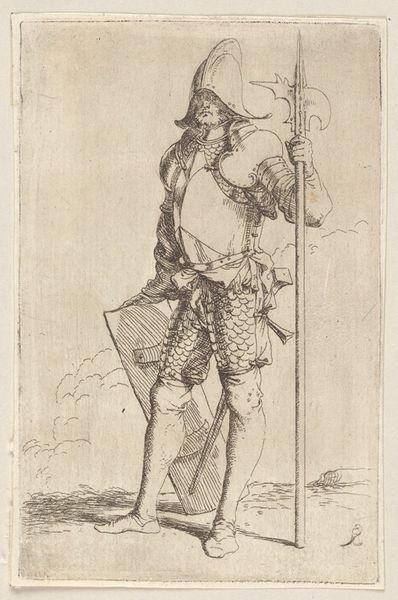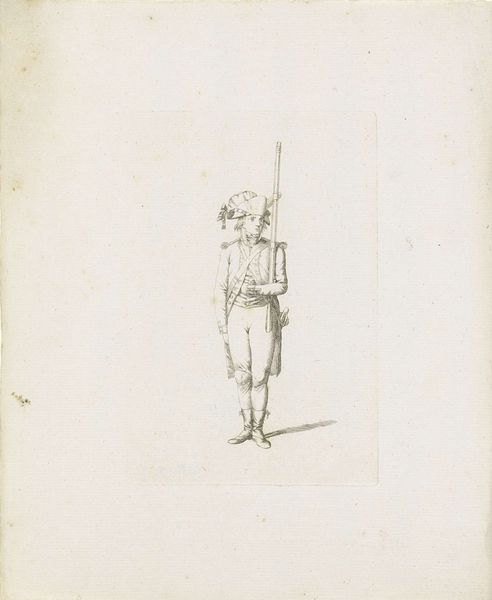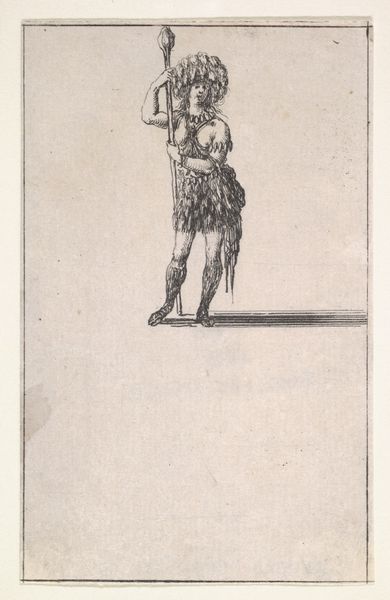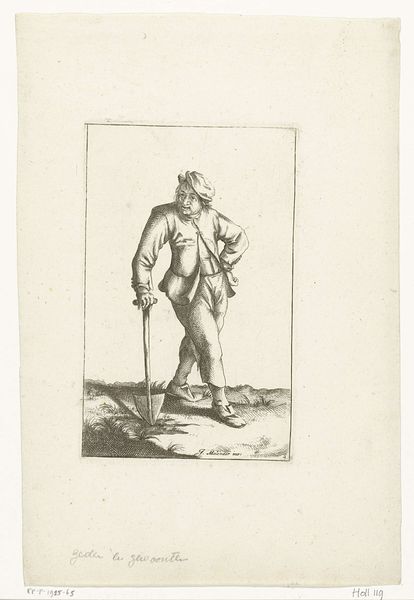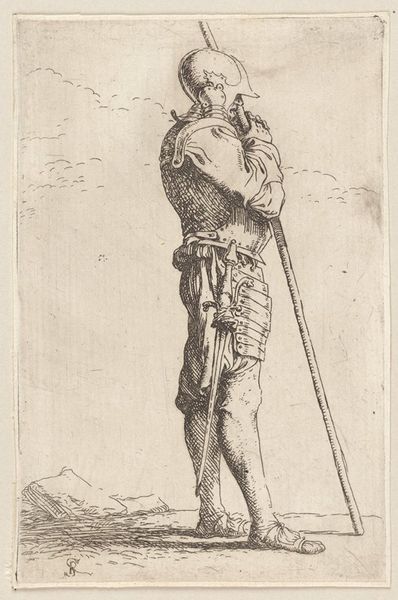
drawing, graphite, pen
#
portrait
#
drawing
#
neoclacissism
#
pencil sketch
#
pen-ink sketch
#
costume
#
graphite
#
pen
#
history-painting
#
academic-art
Dimensions: height 155 mm, width 105 mm
Copyright: Rijks Museum: Open Domain
Curator: Let’s turn our attention to “Staande Franse soldaat,” or "Standing French Soldier", a drawing created around 1795 by August Christian Hauck, currently residing here at the Rijksmuseum. Editor: It’s so delicate, almost ethereal. I’m immediately drawn to the light touch of the pen and graphite. It feels very immediate, like a fleeting observation. Curator: Absolutely. This work emerges from the Neoclassical art movement, situating it in a period grappling with revolution, the shifting socio-political landscapes, and the rise of new forms of identity. What does this solitary soldier communicate within the framework of broader historical contexts? Editor: Well, looking at the hatching and cross-hatching, especially in rendering his uniform, you can see a dedication to material accuracy, the texture of the fabric, the cut of the coat. Hauck clearly knew his subject, understanding both its construction and its role in constructing the soldier’s identity. Curator: Yes, consider the very act of depiction. Soldiers, particularly French soldiers, become symbolic during the period after the French Revolution. The image embodies shifting class structures, questioning the aristocratic structure through a romantic idealization of the "common man.” The figure, even with his firearm, lacks overt aggression, conveying an introspection which might reflect internal challenges the newly formed republic was facing. Editor: I agree, but the image can also reflect the material circumstances of military life. You see the way the soldier carries his musket. It speaks to repetitive actions, the weight of duty, of how labor literally shapes a body. It makes me think about the military-industrial complex and the endless production of warfare objects. Curator: Precisely. By analyzing this representation through multiple lenses of production and reception, we confront dominant narratives that sanitize conflicts. What sociopolitical message emerges when viewing an individual amidst the industrial and political implications of war? Editor: Seeing it this way shifts my perception from a historical portrait to one of raw labor. Curator: Which underscores how interrogating historical images gives voice to suppressed narratives, revealing nuances of socio-political identity. Editor: It is a powerful illustration about how materiality, far from being a neutral element, is charged with social and political meaning.
Comments
No comments
Be the first to comment and join the conversation on the ultimate creative platform.

